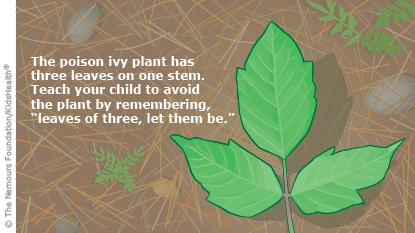- Home
- Parents Home
- Allergy Center
- Asthma Center
- Cancer Center
- Diabetes Center
- A to Z Dictionary
- Emotions & Behavior
- First Aid & Safety
- Food Allergy Center
- General Health
- Growth & Development
- Flu Center
- Heart Health
- Homework Help Center
- Infections
- Diseases & Conditions
- Nutrition & Fitness Center
- Play & Learn Center
- School & Family Life
- Pregnancy Center
- Newborn Center
- Q&A
- Recipes
- Sports Medicine Center
- Doctors & Hospitals
- Videos
- Para Padres
- Home
- Kids Home
- Asthma Center
- Cancer Center
- Movies & More
- Diabetes Center
- Getting Help
- Feelings
- Puberty & Growing Up
- Health Problems of Grown-Ups
- Health Problems
- Homework Center
- How the Body Works
- Illnesses & Injuries
- Nutrition & Fitness Center
- Recipes & Cooking
- Staying Healthy
- Stay Safe Center
- Relax & Unwind Center
- Q&A
- Heart Center
- Videos
- Staying Safe
- Kids' Medical Dictionary
- Para Niños
- Home
- Teens Home
- Asthma Center
- Be Your Best Self Center
- Cancer Center
- Diabetes Center
- Diseases & Conditions
- Drugs & Alcohol
- Expert Answers (Q&A)
- Flu Center
- Homework Help Center
- Infections
- Managing Your Medical Care
- Managing Your Weight
- Nutrition & Fitness Center
- Recipes
- Safety & First Aid
- School & Work
- Sexual Health
- Sports Center
- Stress & Coping Center
- Videos
- Your Body
- Your Mind
- Para Adolescentes
Poison Ivy
What Is Poison Ivy?
Poison ivy is a plant that can cause an itchy rash when touched. Poison ivy, poison oak, and poison sumac all contain urushiol (yoo-ROO-shee-ol), a sticky, colorless, odorless oil. Urushiol is not poisonous. It's considered an allergen because it causes an allergic reaction in most people who touch it.
What Are the Signs & Symptoms of Poison Ivy?
The allergic reaction to poison ivy includes a rash with blisters, itching, and sometimes swelling. The rash can look like straight lines if the plant brushed against the skin that way.
After a few days, the oozing blisters become crusty and start to flake off. The rash from poison ivy can start within hours of contact or as much as 5 days later. It may take 2 to 3 weeks to heal.
How Is Poison Ivy Treated?
If your child comes into contact with poison ivy/oak/sumac:
- Remove and wash any clothing that touched the plant.
- Gently wash your child's skin and scrub under fingernails right away with soap and cool water.
- Cut fingernails short to keep your child from breaking the skin when scratching. Broken skin can let bacteria in, causing infection.
- Place cool compresses on the skin as needed.
For itching:
- Add oatmeal to the bath.
- Use calamine lotion on the skin (but not on the face or on the genitals).
For nighttime help: If your doctor recommends it, give your child an over-the-counter oral antihistamine (Benadryl or a store brand). This can give temporary help with the itching, and it can make your child drowsy and better able to ignore nighttime itching. Make sure to follow the dosing directions carefully.
When Should I Call the Doctor?
Call your doctor if your child has any kind of rash, especially with a fever. Home treatment can manage most poison ivy/oak/sumac rashes. But get medical care if the skin looks infected (with increasing redness, warmth, pain, swelling or pus) or the rash:
- covers a large part of the body
- is on the face or genitals
- gets worse despite home treatment
For more severe cases, doctors sometimes prescribe pills or creams with steroids (not the same type of steroids that bodybuilders use) to decrease itching and redness. If the skin looks infected, the doctor may prescribe antibiotics.
Is Poison Ivy Contagious?
The poison ivy rash itself isn't contagious. Fluid from a blister can't spread the rash. But it is possible to get a rash from poison ivy without touching a plant. Urushiol can transfer from one person to another from their skin or clothing. Kids also can pick it up from anything that's been in contact with the oil, including pets. Urushiol can even travel through the air if someone burns the plants to clear brush.
How Can We Protect Kids From Poison Ivy?
Poison ivy can grow anywhere — from forests to backyards. And it's hard to identify: The leaves of poison plants blend right in with other plants and brush. Plus, there are several types of poison ivy, and each one can look different depending on the time of year.

The leaves of poison ivy plants release urushiol when they're bumped, torn, or brushed against. When the oil is released, the leaves may look shiny or have black spots. Then, it easily can get on skin.
Here are some tips to help kids avoid getting a rash from poison ivy:
- Teach them how to identify poison ivy, oak, and sumac, so they can steer clear of them (they should be especially careful of plants if the leaves look shiny).
- Tell them to avoid areas where you know there's poison ivy.
- Have them wear long sleeves and long pants when in areas where poison ivy might grow.
- If your dog has been outside exploring the woods, give him a bath to wash off any urushiol oil that may be on his coat.
- If your kids touch urushiol oil, have them wash it off their skin right away by taking a shower and using lots of soap.

© 1995- The Nemours Foundation. KidsHealth® is a registered trademark of The Nemours Foundation. All rights reserved.
Images sourced by The Nemours Foundation and Getty Images.
